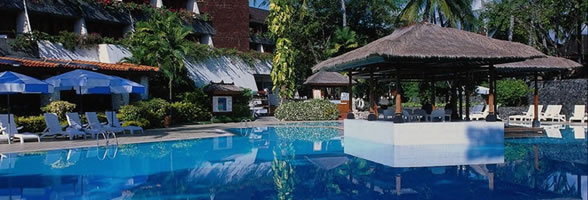
relax,rejuvenate and enjoy your Trip to Kenya
Gorilla Safari and the Maasai Mara
-
- COUNTRY:
- Kenya, Rwanda, Uganda
- DEPARTURES:
-
2011: 4 Nov, 20 Dec, 27 Dec
2012: 3 Jan, 10 Jan, 27 Jan, 10 Feb, 24 Feb, 9 Mar - PRICE:
- From £2189 - £2339 (17 days) inc accomodation
Gorilla Safari & the Masai Mara
Day-by-day itinerary
| Day 1: | Depart Home. |
| Day 2: | Arrive Nairobi; transfer to Hemingways Resort(WATAMU). |
| Day 3: | Into 4WD vehicles for drive to Masai Mara; late afternoon game drive. |
| Day 4: | Full day in the Masai Mara. |
| Day 5: | Early morning game drive; drive to Kembu Farm. |
| Day 6: | To Lake Nakuru N.P.; afternoon game drive; camp in park. |
| Day 7: | Morning game drive; to Naiberi River camp near Eldoret. |
| Day 8: | To Jinja, Uganda. |
| Day 9: | Optional day's rafting, bungy jumping, quad biking, visit Bujagali Falls or walks around local villages. |
| Day 10: | To Lake Mburo N.P.; guided afternoon nature/bird walk; camp in park. |
| Day 11-12: | To Lake Bunyoni; at leisure with excellent birdlife and good scenery. |
| Day 13: | To Ruhergeri, Rwanda. |
| Day 14: | Visit to see the gorillas in Parc National des Volcans in Rwanda. |
| Day 15: | To Kigali; afternoon free for shopping, to visit the Genocide Museum and to explore this small and attractive city. |
| Day 16: | Evening flight via Nairobi. |
| Day 17: | Arrive Home. |
How this holiday makes a difference
While seeing the gorillas in their natural habitat is arguably the most exceptional wildlife encounter of them all, running trips of this nature raises many ethical questions. The most pertinent of these is do the gorillas benefit from exposure to tourists?
The answer to this is a resounding YES. There are about 600 mountain gorillas left in the world. By paying US $500 per person for a gorilla permit, you are contributing vital income directly towards preserving these magnificent creatures. The mountain gorilla's survival is dependent on money - money to pay for anti-poaching programs in need of personnel, weapons, ammunition and transport; money to pay for maintenance of the national park – the gorilla's natural habitat; money to make sure that those involved with protecting the gorillas are paid enough not to be tempted by bribery from would be poachers.
In order to minimise the impact of our groups, exposure to the gorillas is well controlled by local leaders. Group size is limited to a maximum of 6. Time spent with the gorillas is limited to one hour and a distance of 7 metres is maintained between the group and the gorillas at all times. Every effort is made to ensure the gorillas are not exposed to human bacteria – if you are suffering from a cold then you are not allowed to visit the gorillas, and touching the animals is strictly prohibited.
Rwanda is a country whose people are struggling to recover from years of civil war and genocide. By visiting the gorillas in Rwanda you will not only help preserve their existence, you will also be helping an economy in dire need of the wealth tourism can generate.
We have at our offices worked to reduce our carbon footprint through a reduction of energy use and energy conservation measures. We also actively reduce the waste produced by having active reduction and recycling policies in place. We run annual staff workshops on Responsible Tourism.
Global warming is a reality and to help you make a difference by reducing the carbon dioxide that is produced when you travel we offer a chance to carbon balance your flights. We encourage all our clients to do this and do so for all our staff travel. Go on do your bit!






